General Understanding of Thematic Art and Paintings
Thematic art is the visual orchestration of narrative, symbolism, and emotion on canvas. It transcends decorative aesthetics, guiding the observer into realms of thought and introspection. Unlike abstract or purely formalist expressions, thematic paintings carry conceptual weight, stories, beliefs, moments, or critiques are embedded in the brushwork, often layered in allegory or metaphor. Whether mythological, socio-political, spiritual, or deeply personal, thematic art weaves motifs across visual fields, drawing attention to subjects not just seen, but felt. It invites reflection, dialogue, and a silent witnessing. A thematic painting is not just an image, it is a perspective paused in time.
What Is Thematic Painting?
Thematic painting is a genre rooted in the intentional use of visual art to explore a specific subject, emotion, or idea across the canvas. Unlike styles dictated purely by form or technique, thematic painting revolves around content, the what and why behind the art. It may portray mythologies, historic revolutions, personal trauma, ecological degradation, or existential longing. Artists use tools like composition, texture, tonality, symbolism, and visual rhythm to articulate narratives. Often, the subject dictates the medium, from stark chiaroscuro in moral conflicts to fluid, ethereal brushstrokes in meditations on memory. Each thematic painting becomes a silent chronicle, one that doesn’t merely depict but interrogates, mourns, or celebrates. The brush becomes a voice, and the canvas, a stage of thematic interplay.
What Emotions Or Themes Do Thematic Paintings Commonly Portray?
Thematic paintings span a vast emotional spectrum from melancholy to ecstasy, solitude to social upheaval. They are deeply tethered to the artist’s worldview, often evoking emotions that are culturally, psychologically, or politically rooted. Common themes include mortality, identity, love, loss, war, religion, nature, and transformation. For instance, Edvard Munch’s "The Scream" captures existential dread, while Frida Kahlo’s self-portraits echo pain and resilience. Artists manipulate color theory, symbolic imagery, and spatial tension to embody emotion. Reds may bleed rage or passion, while fractured composition may signal psychological unrest. Often, these works serve as a mirror reflecting not just personal sentiment, but collective anxieties or aspirations. The power of thematic painting lies in its ability to simultaneously anchor and expand emotion, making private grief or joy feel universal and timeless.
What Are The Most Recognized Styles In Thematic Painting?
Thematic painting is not confined to a single style, its strength lies in its adaptability across artistic movements. Realism often serves as a vessel for social and historical commentary, from Courbet to Goya. Symbolism, prominent in the late 19th century, infuses visual metaphors into spiritual and philosophical themes. Surrealism explores the unconscious and dream logic, rich terrain for exploring identity, memory, and repression. Expressionism distorts form and color to emphasize emotion over accuracy, amplifying thematic resonance. Even Minimalism, when infused with intent, becomes thematic, using absence and repetition to pose existential questions. Importantly, the style is a vehicle, not the destination. Thematic paintings across styles are unified not by how they look but by how deeply they compel thought, emotion, and dialogue. Each style frames the theme in a unique lens, reshaping perception and response.
Why Are Thematic Paintings Still Revered Today?
Thematic paintings endure because they speak to the human condition, across time, geography, and changing cultural tides. In an age saturated with fleeting visuals, thematic art offers depth, stillness, and critical engagement. Museums continue to recontextualize classical works through modern lenses, while contemporary artists echo or subvert thematic traditions to respond to today’s crises such as climate change, displacement, identity politics, and digital isolation. Their reverence stems from their power to initiate dialogue. These works aren’t passive, they provoke, disturb, console, or reveal. They also preserve intangible histories, ideologies, and emotions that would otherwise dissipate. Whether religious iconography or dystopian landscapes, thematic paintings serve as emotional and intellectual archives. We return to them because they do not merely exist, they speak, long after the artist’s brush has dried. They’re not just seen, they’re remembered.
Techniques, Mediums & Artistic Tools in Thematic Art
Thematic art isn’t merely painted it’s constructed layered orchestrated. Each stroke becomes a metaphor each medium a voice. Techniques such as underpainting chiaroscuro and impasto shape narratives as much as imagery. Artists often gravitate toward symbolic composition visual rhythm and dynamic tension to convey layered emotions. Tools like palette knives mop brushes and glazing mediums offer control over tone and tactility. Mediums be it egg tempera oil or acrylic determine texture and drying tempo guiding the pacing of visual storytelling. Every surface canvas birchwood linen interacts differently with pigment each echoing a different thematic echo a different temporal soul.
How Are Thematic Paintings Traditionally Created?
The creation of thematic paintings is a ritualized process part vision part craft. It often begins with a conceptual sketch or compositional mapping where the central theme is plotted through symbolic shapes recurring motifs or allegorical subjects. Artists lean into traditional practices such as grisaille (monochrome underpainting) or pentimento (traces of earlier compositions) to construct meaning beneath the surface. In many classical methods oil glazes are layered meticulously to evoke emotional density letting light pass through veils of color and time. For narrative heavy works the brush often mimics storytelling devices foreground becomes exposition middle ground reflects tension background hints at resolution. Artists embrace historical techniques like sfumato to blur transitions evoking memory or myth. What emerges isn’t just a painting but a thematic landscape constructed through cadence contrast and continuity where color theory spatial depth and brushwork play harmoniously to tell stories suspended in stillness.
What Painting Mediums Are Commonly Used?
In thematic art the medium isn’t passive it’s a narrative collaborator. Oil remains the traditional favorite for its slow drying time richness in pigment and ability to layer glaze and manipulate surface nuances. Its viscosity allows for chiaroscuro and subtle tonal shifts that enhance symbolic imagery. Acrylics more contemporary provide fast adaptability and bold color payoff suitable for modern themes or socio political commentary. Watercolors offer translucency often used in introspective or poetic thematic styles where the medium’s unpredictable bleed mirrors emotional uncertainty. Egg tempera with its crisp lines and matte finish is favored for iconography and historical narratives offering permanence and clarity. Mixed media combining graphite pastels gouache or digital layers invites abstraction and metaphor letting textures and materials embody themes. Each medium doesn’t merely hold color it holds meaning shaping not just what’s seen but what’s felt what’s remembered what’s resisted.
What Role Do Canvas Wood Or Fabric Play In Thematic Painting?
The choice of surface is not technical it’s conceptual. Canvas offers elasticity and breath allowing for large scale storytelling and expressive movement. It responds well to oil and acrylic holding layers of glaze and impasto without warping making it ideal for dramatic or expansive themes. Wood panels rigid and grainy root the artwork in solidity. Historically used in Byzantine and Renaissance altarpieces they’re preferred for tempera and gold leaf reinforcing sacred or historical themes with their permanence and weight. Linen smoother than cotton canvas grants elegance to portraiture and subtler narratives. Fabrics including raw jute or treated silk introduce texture and tactility into the composition often chosen for their organic irregularity. In thematic art these surfaces become metaphors themselves wood for grounded heritage canvas for evolving stories fabric for fragility or ephemerality. The very grain of the support becomes part of the narrative voice silent yet speaking through every brushstroke laid upon it.
Artistic Intent and Visual Storytelling
In the quiet whisper of a brushstroke or the deliberate pause of a blank space lies the intent the soul of thematic painting. Here, art transcends decoration. It breathes in metaphors, walks the corridors of meaning, and invites the viewer into dialogues unsaid. Every canvas is a vessel not just for pigment but for purpose. It doesn't merely imitate life it interprets it. Artists don’t always illustrate the visible. They often manifest the invisible emotion, ideology, memory, mythology. A well-composed painting, like a well-written poem, holds within it layered narratives where composition, gesture, and silence all contribute to storytelling.
What Stories Or Messages Do Thematic Paintings Aim To Convey?
Thematic paintings are not passive visuals they are charged territories where ideas unfold through symbolic motifs, composition, and visual metaphors. Whether rooted in mythology, socio-political upheaval, or inner psychological realms, the narrative isn't linear it’s atmospheric. An artist might depict a crumbling temple under a blood orange sky to symbolize cultural erosion or frame a lone figure amidst vast negative space to echo isolation. Paintings like Picasso’s Guernica or Amrita Sher Gil’s Bride’s Toilet don’t tell you what to feel they trigger feeling through juxtaposition, symbolism, and visual allegory. These works function as mirrors of time, morality, and identity, often layered with historical references, personal anguish, or communal longing. Thematic paintings often pose more questions than they answer, offering ambiguity as narrative strategy. They seduce the eye but speak to the intellect, the spirit, and collective memory one frame at a time.
How Do Artists Express Political, Spiritual, Or Cultural Symbols Through Art?
Art has always been a clandestine language of resistance, devotion, and heritage. Through composition, iconography, and visual metaphors, artists encode systems of belief and protest into their canvases. A raised fist, a melting flag, a fractured deity each becomes a cipher requiring the viewer’s gaze to decode. Spiritual symbols might be expressed through mandala patterns, divine proportions, or sacred geometry. Political resistance often leaks through distortion, chiaroscuro, or subversive use of classical styles. Cultural identity might rest in textile patterns, architectural elements, or indigenous color theory. Even absence becomes a form of presence what’s not shown can echo louder than what is. Artists often layer these elements subtly, allowing symbols to operate simultaneously on aesthetic and conceptual levels. For instance, in Indian miniature painting, a lotus is never just a flower it’s transcendence, sexuality, and spiritual blooming depending on context. This semiotic richness deepens a painting’s narrative, transforming visuals into language.
How Do Light, Shadow, And Color Palettes Influence Mood?
Light isn't just an element in painting it is the breath of mood. It sculpts form, narrates time, and conjures emotion. Through tenebrism or sfumato, artists use light and shadow to dramatize narrative or soften transitions between inner and outer worlds. Shadows don’t merely darken they suggest mystery, concealment, grief. A cool, monochromatic palette might evoke detachment or meditative stillness think Rothko’s blues. Conversely, vermilion and ochre might stir ancestral memory or ritualistic intensity. The temperature of color, the angle of light, and the density of shadow all act as narrative agents. In Caravaggio’s dramatic chiaroscuro, the stark contrast pushes subjects into theatrical immediacy. In Indian Pichwai art, color saturation and stylized light express devotion and seasonal festivity. Each brushstroke of light becomes intention every shadow, a psychological veil. It’s not just about what’s seen but how it’s emotionally lit, shaping the viewer’s internal climate with visual precision.
Purchase, Collection & Investment in Thematic Paintings
The act of purchasing a thematic painting isn’t merely transactional—it’s an intuitive dialogue between the viewer and the canvas. Every thematic painting anchors an idea, a narrative, or a social commentary frozen in brushstrokes. Collecting such art demands more than aesthetic alignment; it asks for emotional investment, curatorial foresight, and a relationship with time. Over the years, collectors often evolve their walls into archives, storing seasons, silences, revolutions, and redemptions. The value lies in what the piece provokes within. Be it expressionist depictions of solitude or symbolic realism tracing myth and memory, each theme adds a curated pulse to one’s personal gallery where stories breathe through colour.
Where Can You Buy Authentic Or Thematic Paintings?
Authentic thematic paintings are typically available through curated art galleries, independent artists' studios, national art fairs, and digital marketplaces that collaborate directly with verified creators. Platforms like IndianShelf, India Art Fair, Jehangir Art Gallery, or even auctions like Saffronart and Christie's serve as fertile grounds. However, beyond the venue, the buying process is intimate. Seek works that speak in metaphors, tonalities, or recurring motifs. Often, thematic artists embed layered commentary, be it cultural nostalgia, ecological grief, or spiritual transcendence, within their compositions. Supporting emerging artists or art collectives directly fosters trust and builds narratives beyond commerce. Engage in studio visits, artist talks, or thematic exhibitions to understand the intention behind the strokes. A painting chosen with awareness becomes both artefact and anchor, holding context, character, and timeless commentary.
How Can You Verify The Authenticity Of A Painting?
Verifying authenticity involves both tactile and cognitive inquiry. First, request a Certificate of Authenticity (CoA) issued by the artist or recognized gallery. Examine the medium, pigments, canvas texture, and brushwork under natural light often reveal the truth of the hand. Provenance documentation, which traces the ownership lineage, helps ensure historical credibility. Use UV light to detect newer overpainting or unusual varnishes. In high-value scenarios, professional art forensics and signature verification through infrared or x-ray scans can be conducted. For thematic paintings especially, cross-reference the thematic period of the artist’s oeuvre. Does the subject, palette, or symbolism align with their established conceptual trajectory? Authenticity is also conceptual. Ensure the message, the emotion, and the materiality align with the artist’s documented style and thematic preoccupations. Trust your eye but verify with insight.
What Makes Thematic Art A Worthwhile Investment?
Thematic art transcends decorative aesthetics. It’s a visual thesis. Investing in such works means aligning with narratives that document socio-political discourse, personal memory, or cultural shifts. Unlike generic art, thematic paintings appreciate in emotional, cultural, and often financial value as their relevance deepens over time. Collectors are drawn not just to technique but to the artist’s conceptual continuity. Works that challenge norms, reflect identity, or interpret history with symbolism become timeless assets. Moreover, thematic paintings often serve as artefacts of an era, holding socio-historic weight, making them desirable in institutional or legacy collections. Financially, early acquisitions of thematically mature artists often yield high returns as their influence rises. Spiritually and culturally, they become heirlooms. Each canvas carrying not just pigment and paper, but philosophy. Investing in thematic art is investing in the permanence of ideas.
Care, Framing & Preservation of Thematic Paintings
Thematic paintings carry not just colors on canvas but chapters of consciousness encoded in pigments, strokes, and silent metaphors. Their care is not merely physical; it’s curatorial. Preserving them requires patience and poetic attention like dusting off time. The oils and tempera used are fragile conversations between artist and surface. Frames must cradle, not cage. Light must touch them like memory, not exposure. One must learn to speak in the language of varnish, canvas tension, humidity levels, and archival sensibilities. To preserve a painting is to preserve an emotion’s architecture, a thematic chord that vibrates across generations, unbroken and breathing.
How Do You Properly Store And Maintain Artworks?
Properly storing thematic paintings means protecting the emotional resonance locked within their form. First, control the environment, keep relative humidity between 40–60 percent, temperature stable, and lighting indirect. Use UV-filtering glass or acrylic glazing if displaying. For storage, acid-free paper and archival-quality sleeves are non-negotiable. Avoid bubble wrap as it sweats. Use glassine sheets and store vertically in a climate-controlled space, never directly against each other. Check periodically for foxing, mold, or paint flaking. Dust with a soft sable brush, not cloth, to prevent abrasion. If framed, make sure the backboard is acid-free and the mounting is reversible. Thematic art is sensitive to environmental metaphor; sunlight can turn a sunset’s warmth into a ghostly blur. Respect the surface and never touch with bare hands. Artworks breathe; they expand and contract with the room. Maintenance is ritual, gentle, observant, and reverent.
What Frames Best Complement Thematic Art?
Framing thematic art is more than bordering, it’s extension and echo. The right frame doesn’t isolate the painting, it punctuates its intention. Gilded baroque frames may drown minimalist themes, while float frames breathe better around conceptual or modern canvases. Use wood for warmth, metal for abstraction. Thematism often thrives on contrast, a chaotic narrative enclosed in clean lines, a subdued palette wrapped in dark walnut. Always use acid-free matting. Neutral tones like ivory, slate, or charcoal keep the focus on the theme’s visual grammar. Avoid ornate distractions unless the painting itself is baroque or rococo in its language. Thematic art frames best when the frame becomes an interpretative space, a visual pause, not a loud commentary. Use non-reflective, UV-protected glass. And remember, the frame should not overpower the piece but accompany it like a whisper that guides the eye inward.
Can Paintings Be Restored Without Losing Meaning?
Yes, if restoration is treated as an act of translation, not invention. Thematic paintings speak in tones beyond visual; their restoration must retain symbolic cadence. Skilled conservators use reversible, conservation-grade materials, never repainting, only retouching. Techniques like inpainting fill loss without violating original intent. Solvent cleaning removes grime but must not strip aged glazes or intentional patina. Varnish layers are delicately removed or reapplied to revive clarity without muting narrative undertones. The key lies in knowing when not to restore. A crack can be a character. A faded pigment can be part of its journey. Restoration must align with the artwork’s period, medium, and artistic vocabulary. Consult archival photos or artist notes if available. Thematic meaning resides not just in the intact image but in its temporal texture, the wounds, the weathering, the pauses. A well-restored painting hums with continuity, not erasure.
What Are Common Damages To Paintings Over Time?
The passage of time etches itself into art as both narrative and threat. Paintings suffer from craquelure, fine surface cracks, due to fluctuating humidity or aging binders. Canvas can sag, stretch, or develop mildew in moist environments. Exposure to sunlight fades pigments, especially organic ones like carmine or indigo. Varnish yellows with age, veiling the vibrancy. Dust and pollutants embed in textured brushwork, dulling the surface. Mold spores thrive on untreated backboards. Insects like silverfish may nibble at paper or linen. Oil paintings can develop bloom, a whitish haze, if improperly stored. Physical damage like tears, abrasions, or punctures disturbs both form and meaning. Improper framing causes buckling or acid burn from non-archival materials. Thematic paintings, often emotionally dense and detail-rich, suffer most when nuance is lost. Each damage is a distortion of intention. Preventive care through controlled climate, archival protection, and gentle handling is the artist’s unseen collaborator guarding the narrative against silence.
Home Decor, Styling & Mood Setting With Thematic Art
Thematic art is not mere embellishment it is narrative architecture. It anchors the energy of a room behaving like the punctuation of space. Whether symbolic, abstract, representational, or expressionist, the chosen theme becomes the emotive axis of the setting. A single canvas can arrest chaos evoke nostalgia or project serenity. Through recurring visual motifs be it florals, mythology, surreal geometry, or cultural tapestries the artwork doesn’t just fill the void it conducts the mood. Much like lighting or scent, a theme driven painting becomes a room’s unspoken voice lending it depth, direction, and emotional choreography.
How Can Thematic Art Influence A Room’s Ambience Or Tone?
Thematic art channels visual emotion into spatial experience. A monochromatic surrealist piece may cool down a space like rain on glass while a vibrant folkloric canvas may ignite warmth like mid morning light. When aligned with interior intent, thematic paintings behave like emotional tuning forks evoking calm in bedrooms, vitality in kitchens, or gravitas in studies. The tone depends on palette, brushwork, scale, and placement. A large horizontal abstract in cool hues might elongate a room while suggesting openness. Figurative or conceptual themes can create intellectual tension in workspaces. The art’s semiotics the motifs, historical cues, or allegorical elements evoke not just moods but time periods, philosophies, even psychological states. Ultimately, the painting becomes a visual echo that transforms the room’s silence into atmosphere.
What Interior Styles Pair Well With Thematic Art?
Interior styles become visual ecosystems and thematic art behaves like fauna within it either camouflaged or contrast rich. Minimalist spaces absorb abstract and monochrome themes with ease think Rothko like meditative fields or calligraphic ink explorations. Rustic and bohemian interiors invite pastoral, figurative, or tribal art art that speaks in earthy textures and cultural tongues. Contemporary and urban interiors can embrace pop art, surrealist juxtapositions, or architectural sketches. Meanwhile, classical or neoclassical rooms offer elegant frames for Baroque inspired canvases or academic realism. Thematic art must converse with materiality metal, wood, fabric and not clash with spatial tone. The key is harmony or intentional dissonance. When it dialogues it elevates when it argues it defines.
How Do You Choose The Right Painting For A Living Room, Hallway, Or Study?
Each space demands thematic intimacy. In a living room choose a large scale narrative or abstract work that becomes the visual crescendo something gestural, open ended, or mood enveloping. It should create an aura not just a spectacle. Think tonal harmony with upholstery or thematic contrast that sparks curiosity. In a hallway linear or vertical compositions with directional flow work best guiding movement, expanding perception. Photographic realism or architectural sketches thrive here. For a study choose introspective themes symbolism, literature inspired works, chiaroscuro portraits, or subtle surrealism. The painting should not overpower but instead invite contemplation. Textured brushwork, muted palettes, and intellectual themes enhance mental stillness. Lighting, eye level placement, and frame choice are crucial each element helping the art to breathe in sync with its room’s purpose.
Cultural Impact & Historical Legacy of Thematic Painting
Thematic painting, unlike decorative or ornamental art, serves as a mirror to collective memory, echoing rituals, revolutions, mythologies, and lived realities across epochs. It anchors visual storytelling in social, spiritual, and political contexts, encoding symbols and brushwork with intention. From ecclesiastical frescoes to modern protest canvases, thematic art moves beyond beauty to narrate. It documents what prose often cannot encapsulate, the subtleties of belief systems, class tensions, or historical trauma. Its legacy lies not only in galleries but in how it changes perception, challenges ideologies, and preserves collective sentiment. Thematic painting is less about what is seen and more about what is remembered through form and color.
What Is The Historical Significance Of Thematic Painting?
Thematic painting has long held a pivotal role in chronicling human history, not as mere documentation but as a powerful medium of symbolic narrative. From the sacred iconography of Byzantine mosaics to the propagandist murals of Diego Rivera, thematic painting encodes ideology into composition. Its historical value is not only visual but intellectual, inviting spectators to engage with context, philosophy, and politics. Renaissance altarpieces weren’t just religious, they were sociopolitical commentaries dressed in divine imagery. During revolutions, French, Russian, or industrial, art became an archive of unrest. In colonized lands, thematic painting resisted through symbolism, turning pigment into protest. As oral traditions faded, it preserved mythology, caste dialogues, migration stories, and trauma across timelines. These paintings didn’t just survive history, they shaped it. They influenced public sentiment, challenged the elite, and became sacred texts for the eyes. In essence, thematic art is where memory, critique, and visual rhythm intersect across eras.
How Did Different Cultures Shape Thematic Painting?
Cultural identity has been the lifeblood of thematic painting, sculpting its visual language across continents. In India, Pattachitra and Mughal miniatures told epics with codified motifs and chromatic hierarchy. In Japan, the Ukiyo-e tradition captured urban life's transience through stylized drama. Thematic painting in Europe, particularly during the Baroque and Romantic periods, was saturated with grandeur, biblical allusion, and emotional catharsis. African cultures often embedded ancestral memory and oral cosmology within symbolic abstraction, while Latin American muralists carved resistance into public spaces. Each culture brought with it not just a palette, but an epistemology, defining composition, sacred geometry, spatial balance, and pigment significance. While Western traditions emphasized linear perspective and chiaroscuro, Asian and Indigenous artists celebrated flatness and spiritual symmetry. These cultural distinctions weren't mere aesthetic choices, they were philosophical postures. Every brushstroke, motif, and negative space became a reflection of a people's values, their cosmology, and their relationship with power, time, and transcendence.
Which Artists Influenced Thematic Movements?
The evolution of thematic painting has been sculpted by artists who wielded the brush not as a tool of decoration, but of disruption and dialogue. Caravaggio, with his dramatic chiaroscuro and biblical realism, humanized religious figures into visceral, earthly beings. Goya's The Third of May 1808 shattered the illusion of heroism in war, making violence itself the subject. Frida Kahlo transformed her body and pain into metaphoric landscapes, merging autobiography with socio-political commentary. Hieronymus Bosch layered medieval anxieties with grotesque surrealism, while Kehinde Wiley reframed Black identity within classical European poses. In India, Amrita Sher-Gil brought indigenous themes into conversation with Western techniques, reshaping gender and gaze. These artists didn’t just shape movements, they exposed wounds, questioned power, and opened visual syntax to the silenced. They made canvas a battleground of truth and introspection. Their legacies remind us that in thematic painting, the artist is both storyteller and seer, prophetic in pigment and precision.
Thematic Art vs Other Artistic Expressions
Thematic art carries the burden and beauty of storytelling. It transcends the canvas to echo a philosophy, a culture, or a socio-political sentiment. Unlike styles rooted in visual experimentation, thematic art isn’t simply a study in color or form, it's a meditation on meaning. Each brushstroke is an annotation, a layered whisper in the artist’s language, narrating a cause, a memory, or a myth. While abstract, minimalist, or expressionist works focus on sensations and compositions, thematic art embodies metaphor and narrative cohesion. It’s rooted in concept, deliberate, reflective, and often culturally anchored. The theme becomes the frame.
How Does Thematic Painting Differ From Minimalist Or Abstract Art?
Minimalist and abstract art thrive on reduction, on creating mood through minimal elements, shapes, gradients, voids, and lines. They're inward, instinctual, and often nonrepresentational. In contrast, thematic painting carries an external narrative, a visual essay where symbolism, character, setting, and mood coalesce. Thematic works are rarely ambiguous in intent; they choose clarity over abstraction. Where abstract art invites subjective interpretation, thematic painting subtly controls it, directing the eye and heart to a central motif. From mythological epics to political allegories, it builds meaning through representational art, architectural depth, dramatic lighting, and figurative anchors. A thematic painting is a stage; its elements are characters, not mere brushplay.
What Sets Thematic Painting Apart From Digital Art Or Prints?
Digital art and prints offer convenience, replication, and often infinite iteration. Thematic painting, by contrast, is unrepeatable, not just in execution, but in spirit. A thematic painting’s texture is physical; it lives in layers of gesso, impasto, or washed pigment, breathing through its canvas or wood grain. While digital mediums may simulate realism or invent surrealist moods, they often lack the haptic imperfections that give thematic work its soul. Thematic art, especially in oil or tempera, ages with dignity, gathering dust, light, and time into its narrative arc. A print may carry a theme, but a painted piece holds it, deeply, visibly, unapologetically. The aura of the original persists beyond pigment, it’s in the artist’s sweat, pause, revision, and intention.
How Do Watercolors And Oil Paintings Convey Themes Differently?
Watercolors are transient, breath-like. They excel at subtlety, atmosphere, and fragility. When applied to thematic compositions, they convey emotion through dilution, the suggestion of memory, fading thought, or nostalgia. Their bleeding edges and transparent glazes often speak to impermanence or nature. Oil paintings, conversely, are assertive, bolder in mass, more tactile in essence. Oils render themes with authority, heavy chiaroscuro, dense layering, and meticulous realism give them gravitas. Where watercolor evokes, oil affirms. In thematic art, this distinction matters, watercolors lean into poetic metaphors, while oils often illustrate narrative weight. Both are valid vessels, the choice defines the tone. A tale of fleeting innocence breathes best in watercolor, a rebellion or revelation commands oil.
Emotional & Symbolic Value in Thematic Art
Thematic art breathes emotional depth into stillness. Every brushstroke a whisper, every shade a sigh. These artworks go beyond form; they encapsulate memory, grief, longing or ecstasy in pigment. Themes, whether rooted in mythology, solitude, devotion or nature, transform a canvas into a mirror of the viewer’s internal world. A stormy seascape might echo inner chaos. A luminous tree may symbolize growth after loss. Symbols embedded in these works, open windows, burning lamps, wilted flowers, evoke narratives far richer than words. Thematic art is not merely decorative. It is soul-bearing. It becomes a tactile diary, a language of sentiment woven through visual composition.
Can Thematic Paintings Be Meaningful Gifts?
Yes, thematic paintings possess the power to be immensely meaningful gifts because they transcend utility and speak to emotion, memory or belief. Gifting a painting that aligns with the recipient’s values, spiritual leanings, life experiences or dreams infuses the object with personal resonance. A painting on resilience, for example, can become a visual reminder of a loved one’s strength. Unlike generic presents, thematic art is interpretive. It grows in meaning with time. The subject chosen, be it a lone mountain, a family under a banyan tree or abstract symbols, carries encoded emotions and thought. In gifting such art, the giver offers a conversation in silence, a legacy of sentiment that can be revisited, reinterpreted and remembered.
What Emotional Value Do Inherited Paintings Hold?
Inherited thematic paintings are more than heirlooms. They are emotional relics, deeply entwined with family memory and cultural identity. Each canvas carries with it the silent breath of generations, the touch of hands that chose it, the eyes that adored it, the walls it witnessed. Themes within inherited works, be they spiritual motifs, pastoral scenes or historical depictions, often reflect the values and sensibilities of the time they were created or collected. When passed down, they act as visual bridges to ancestors and to the stories unspoken at dinner tables. The pigments may crack, the canvas may age, but the emotions housed within continue to whisper identity, origin and belonging to the next bearer.
Why Do People Form Deep Bonds With Thematic Paintings?
Thematic paintings are experienced rather than simply viewed and it is in this immersive interaction that deep emotional bonds form. People find refuge, recognition and revelation in them. A painting may echo one’s inner silence or scream what words cannot. Thematic works often act as silent companions during grief, joy, transition or solitude. Their subjects, recurring dreams, spiritual journeys, love lost or found, mirror lived experience and evoke empathy. The psychological principle of projection is at play. Viewers find parts of themselves within the artwork. Over time, a painting ceases to be just a piece and becomes a confidant, a part of memory architecture, making separation unthinkable.
Frequently Asked Questions (FAQs)
What Defines A Painting As Thematic?
A painting is defined as thematic when it embodies a central idea, concept, or narrative that transcends visual representation and enters the realm of symbolic or philosophical discourse. It is not merely a composition of forms or colors, it is an orchestration of thought. Thematic art often holds continuity in elements such as subject matter, emotional undertone, or sociocultural commentary. Whether allegorical, mythological, political, or existential, the artwork becomes a vessel of dialogue. Techniques such as chiaroscuro, symbolism, spatial tension, and textural contrast are often employed to echo the essence of the theme. Even the palette itself may serve as a narrative device, muted tones for melancholy, harsh contrasts for conflict. A thematic painting resists passivity, it demands engagement, interpretation, reflection. It creates a semantic loop between the observer and the canvas where meaning is not given, but gradually unveiled.
Can Thematic Painting Be Practiced In Modern Styles?
Absolutely. Thematic painting is not confined to classical or academic formats, it evolves through the language of each era. In modern styles like Cubism, Surrealism, Expressionism, or even Street Art, thematic practice finds fresh vocabularies. Thematic undercurrents can manifest through fragmented structures in Cubism, dream-symbols in Surrealism, or socio-political urgency in Graffiti. Artists like Basquiat, Frida Kahlo, and Anselm Kiefer have shown that content does not suffer under stylistic innovation, it adapts, strengthens, transforms. In fact, modern techniques often liberate thematic work from the burden of literal storytelling, allowing metaphor and emotion to speak louder. The gestural brushwork of Abstract Expressionism or the visual dissonance of Dadaist art may cloak meaning, but never erase it. When narrative becomes fluid, even minimalism can whisper entire philosophies. Thus, thematic painting when practiced through a modern idiom bridges personal and collective truths in provocative, innovative ways.
How Do You Protect Paintings From Environmental Damage?
Preservation of paintings is a confluence of material science and artistic respect. Environmental threats, UV light, humidity, dust, fluctuating temperature, air pollutants, compromise pigment integrity, canvas tension, and varnish stability. Protection begins with preventive placement, no direct sunlight, controlled humidity ideally 45 to 55 percent, and stable room temperature 18 to 21 degrees Celsius. Museum glass or UV-filtering acrylic shields against photodegradation without distorting light quality. Archival-grade backing boards and acid-free mounts prevent acid migration in framed works. For oil paintings, periodic inspection ensures the varnish hasn’t yellowed or cracked, restorers may reapply or remove layers as needed using solvents tailored to specific mediums. In storage, paintings must be vertically positioned, loosely wrapped in breathable materials, and never pressed against each other. Digital cataloging also plays a role, ensuring provenance and condition notes are archived. The act of preservation is in essence a tribute, acknowledging that the canvas breathes, changes, and ages just like the story it holds.
Are Narrative Or Thematic Artworks Relevant In Today'S Art World?
Yes and more urgently so. In an age of fleeting content and overstimulation, thematic and narrative artworks provide a slow, immersive space, anchoring both artist and viewer to a deeper dialogue. These works act as a cultural seismograph, detecting tremors of social, psychological, political, or personal unrest. Artists like Kara Walker, Grayson Perry, and William Kentridge confront themes of identity, memory, and power using layered visual metaphors, storytelling, and intertextual references. Thematic art persists not because of nostalgia, but because it confronts what abstraction sometimes avoids, context. As contemporary viewers grow more visually literate, they crave art that doesn’t just decorate space, but reflects and questions it. Thematic work offers intellectual and emotional engagement, aligning with today's broader curatorial trends where art intersects with activism, archives, and anthropology. Far from obsolete, narrative art now exists in conversation with performance, digital media, and installation, its relevance amplified by its ability to evolve.
Can Artists Blend Abstract Methods With Thematic Storytelling?
Yes, and many of the most compelling works arise from this intersection. Abstract techniques, non-representational forms, gestural lines, fragmented space, can amplify, not obscure, thematic narratives. Artists like Mark Rothko, whose color fields evoke existential longing, or V S Gaitonde, whose textural layers whisper spiritual depth, demonstrate that abstraction can carry immense thematic weight. The key lies in how materiality, motion, and void are used. A scraped canvas may become a metaphor for trauma, a distorted shape may echo displacement. In contemporary practice, thematic abstraction often exists in dialogue with language, titles, audio guides, or exhibition contexts scaffold interpretation. Mixed media, too, invites layering, found objects, handwritten notes, or embedded text add narrative density beneath abstraction. Rather than spoon-feeding meaning, this fusion leaves interpretive space, inviting the viewer to participate, decode, complete. In this blurred terrain, abstraction does not dilute story, it becomes the story’s breath, its heartbeat, its silence.



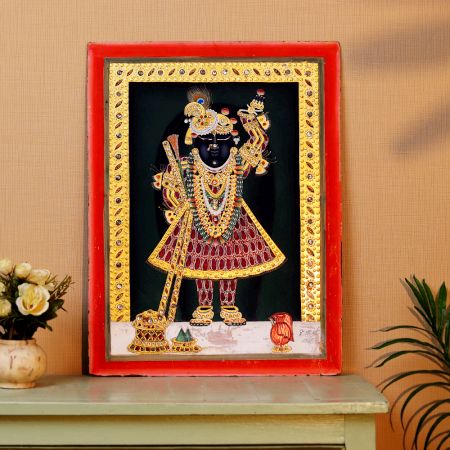




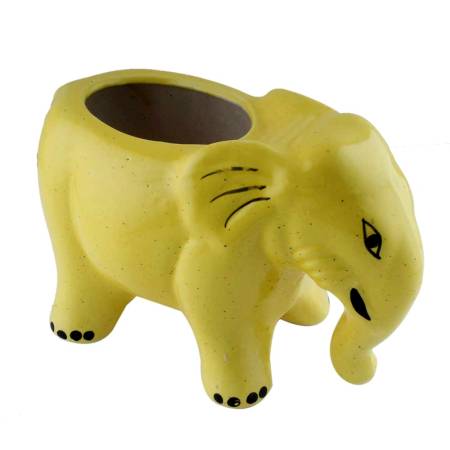
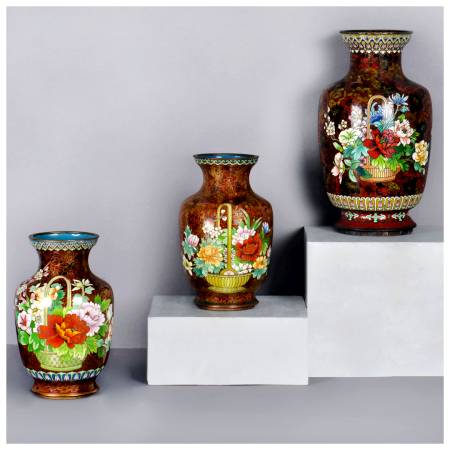
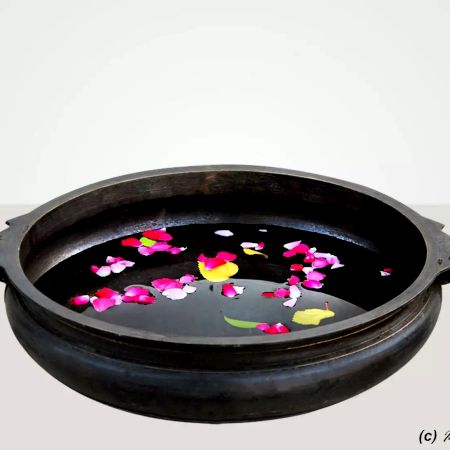
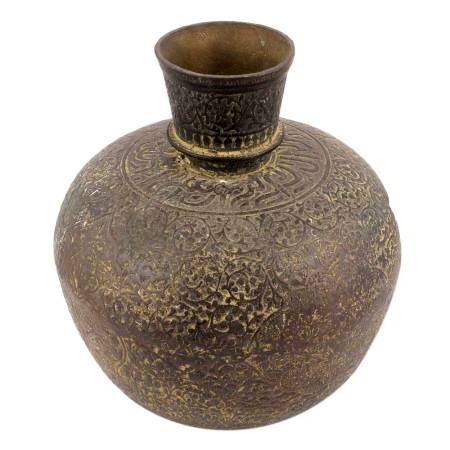

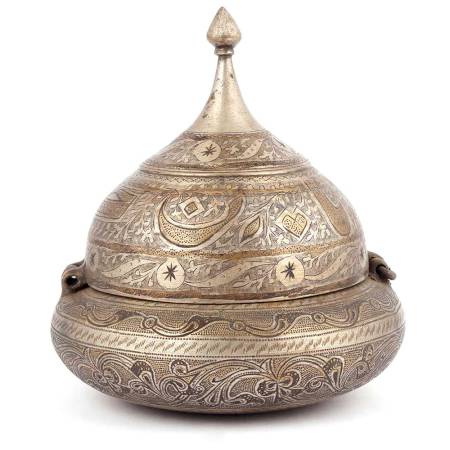








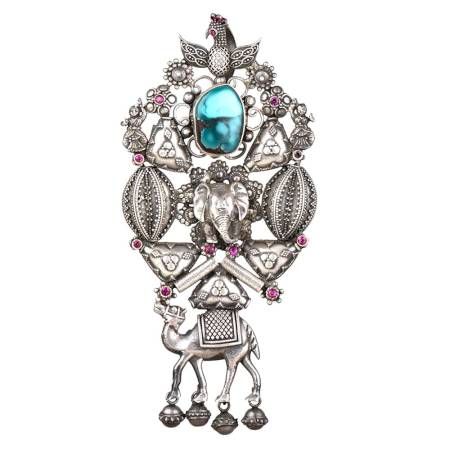








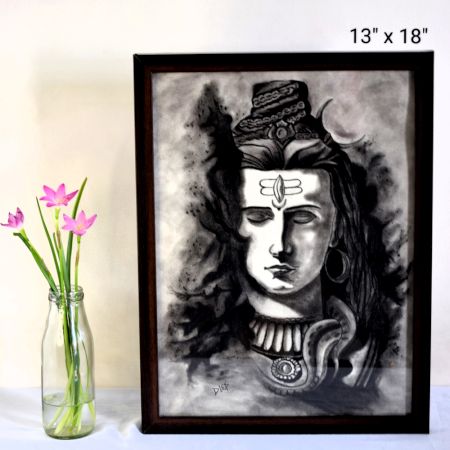
.JPG?ver=1.7)
.JPG?ver=1.7)










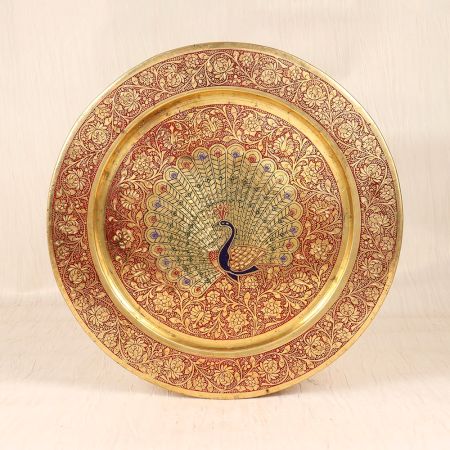












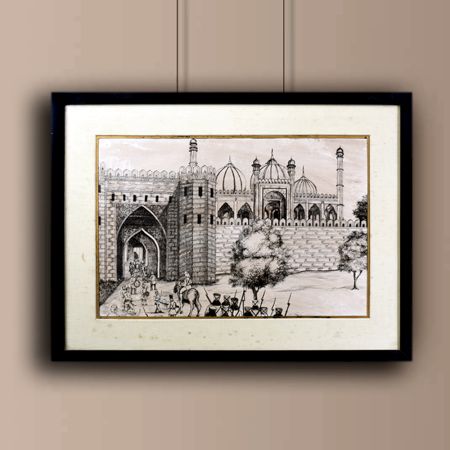
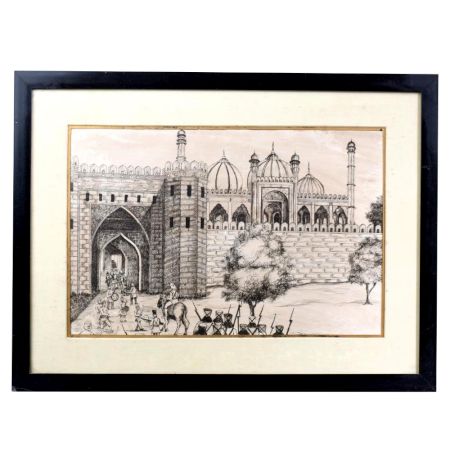
.JPG?ver=1.7)
.JPG?ver=1.7)
.JPG?ver=1.7)
.JPG?ver=1.7)
.JPG?ver=1.7)
.JPG?ver=1.7)
.JPG?ver=1.7)
.JPG?ver=1.7)
.JPG?ver=1.7)
.JPG?ver=1.7)
.JPG?ver=1.7)
.JPG?ver=1.7)
.JPG?ver=1.7)
.JPG?ver=1.7)
.JPG?ver=1.7)
.JPG?ver=1.7)
.JPG?ver=1.7)
.JPG?ver=1.7)
.JPG?ver=1.7)
.JPG?ver=1.7)
.JPG?ver=1.7)
.JPG?ver=1.7)
.JPG?ver=1.7)
.JPG?ver=1.7)
.JPG?ver=1.7)
.JPG?ver=1.7)
.JPG?ver=1.7)
.JPG?ver=1.7)
.JPG?ver=1.7)
.JPG?ver=1.7)







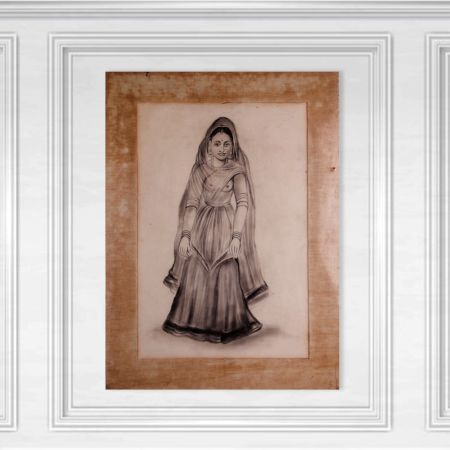
.JPG?ver=1.7)
.JPG?ver=1.7)
.JPG?ver=1.7)
.JPG?ver=1.7)
.JPG?ver=1.7)
.JPG?ver=1.7)
.JPG?ver=1.7)
.JPG?ver=1.7)
.JPG?ver=1.7)
.JPG?ver=1.7)
.JPG?ver=1.7)
.JPG?ver=1.7)
.JPG?ver=1.7)
.JPG?ver=1.7)
.JPG?ver=1.7)
.JPG?ver=1.7)
.JPG?ver=1.7)
.JPG?ver=1.7)
.JPG?ver=1.7)
.JPG?ver=1.7)
.JPG?ver=1.7)
.JPG?ver=1.7)
.JPG?ver=1.7)
.JPG?ver=1.7)
.JPG?ver=1.7)
.JPG?ver=1.7)
.JPG?ver=1.7)
.JPG?ver=1.7)
.JPG?ver=1.7)
.JPG?ver=1.7)
.JPG?ver=1.7)
.JPG?ver=1.7)
.JPG?ver=1.7)
.JPG?ver=1.7)
.JPG?ver=1.7)
.JPG?ver=1.7)
.jpg?ver=1.7)
.jpg?ver=1.7)
.jpg?ver=1.7)
.jpg?ver=1.7)
.JPG?ver=1.7)
.JPG?ver=1.7)


.JPG?ver=1.7)
.JPG?ver=1.7)




.JPG?ver=1.7)
.JPG?ver=1.7)
.jpg?ver=1.7)
.jpg?ver=1.7)
.jpg?ver=1.7)
.jpg?ver=1.7)
.jpg?ver=1.7)
.jpg?ver=1.7)
.jpg?ver=1.7)
.jpg?ver=1.7)
.jpg?ver=1.7)
.jpg?ver=1.7)
.JPG?ver=1.7)
.JPG?ver=1.7)
.JPG?ver=1.7)
.JPG?ver=1.7)
.JPG?ver=1.7)
.JPG?ver=1.7)
.jpg?ver=1.7)
.jpg?ver=1.7)
.JPG?ver=1.7)
.JPG?ver=1.7)
.JPG?ver=1.7)
.JPG?ver=1.7)
.JPG?ver=1.7)
.JPG?ver=1.7)
.JPG?ver=1.7)
.JPG?ver=1.7)
.JPG?ver=1.7)
.JPG?ver=1.7)
.JPG?ver=1.7)
.JPG?ver=1.7)
.JPG?ver=1.7)
.JPG?ver=1.7)
.JPG?ver=1.7)
.JPG?ver=1.7)
.JPG?ver=1.7)
.JPG?ver=1.7)
.JPG?ver=1.7)
.JPG?ver=1.7)
.JPG?ver=1.7)
.JPG?ver=1.7)
.JPG?ver=1.7)
.JPG?ver=1.7)
.JPG?ver=1.7)
.JPG?ver=1.7)
.JPG?ver=1.7)
.JPG?ver=1.7)
.JPG?ver=1.7)
.JPG?ver=1.7)
.JPG?ver=1.7)
.JPG?ver=1.7)
.JPG?ver=1.7)
.JPG?ver=1.7)
.JPG?ver=1.7)
.JPG?ver=1.7)
.JPG?ver=1.7)
.JPG?ver=1.7)
.JPG?ver=1.7)
.JPG?ver=1.7)
.JPG?ver=1.7)
.jpg?ver=1.7)
.jpg?ver=1.7)
.jpg?ver=1.7)
.JPG?ver=1.7)
.JPG?ver=1.7)
.JPG?ver=1.7)
.JPG?ver=1.7)
.JPG?ver=1.7)
.JPG?ver=1.7)
.JPG?ver=1.7)
.JPG?ver=1.7)
.JPG?ver=1.7)
.JPG?ver=1.7)
.JPG?ver=1.7)
.JPG?ver=1.7)
.JPG?ver=1.7)
.JPG?ver=1.7)
.JPG?ver=1.7)
.JPG?ver=1.7)
.JPG?ver=1.7)
.JPG?ver=1.7)
.JPG?ver=1.7)
.JPG?ver=1.7)
.JPG?ver=1.7)
.JPG?ver=1.7)
.JPG?ver=1.7)
.JPG?ver=1.7)
.jpg?ver=1.7)
.jpg?ver=1.7)
.jpg?ver=1.7)
.jpg?ver=1.7)
.jpg?ver=1.7)
.jpg?ver=1.7)
.JPG?ver=1.7)
.JPG?ver=1.7)
.JPG?ver=1.7)
.JPG?ver=1.7)
.JPG?ver=1.7)
.JPG?ver=1.7)
.JPG?ver=1.7)
.JPG?ver=1.7)
.JPG?ver=1.7)
.JPG?ver=1.7)
.JPG?ver=1.7)
.JPG?ver=1.7)
.JPG?ver=1.7)
.JPG?ver=1.7)
.JPG?ver=1.7)